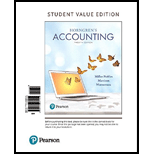
Concept Introduction:
Variable Cost: Variable cost is a cost that changes when the volume of production changes, in the same direction and in the same proportion.
Fixed Cost: Fixed cost is a cost that remains constant, irrespective of changes in production volume.
Selling cost: Selling cost is a cost that incurs to the market and sale of product or goods.
Administrative cost: The costs which are not classified under manufacturing or selling costs fall under administrative cost.
Relevant Cost: Relevant cost is the incremental and inevitable cost that is incurred when making a specific business decision. Relevant cost is useful in eliminating unrequited data that makes the decision making process complex.
Irrelevant Cost: Irrelevant cost is the cost that will remain unchanged as a result of specific business decisions
1.
To Identify: The each cost in the income statement as relevant or irrelevant to Nautical’s decision.
2.
To Decide: Nautical should accept special sales orders or not.
3.
To Identify: Nautical should consider long-term factors in deciding whether to accept the special sales order.
Want to see the full answer?
Check out a sample textbook solution
Chapter 25 Solutions
Horngren's Accounting, Student Value Edition (12th Edition)

 AccountingAccountingISBN:9781337272094Author:WARREN, Carl S., Reeve, James M., Duchac, Jonathan E.Publisher:Cengage Learning,
AccountingAccountingISBN:9781337272094Author:WARREN, Carl S., Reeve, James M., Duchac, Jonathan E.Publisher:Cengage Learning, Accounting Information SystemsAccountingISBN:9781337619202Author:Hall, James A.Publisher:Cengage Learning,
Accounting Information SystemsAccountingISBN:9781337619202Author:Hall, James A.Publisher:Cengage Learning, Horngren's Cost Accounting: A Managerial Emphasis...AccountingISBN:9780134475585Author:Srikant M. Datar, Madhav V. RajanPublisher:PEARSON
Horngren's Cost Accounting: A Managerial Emphasis...AccountingISBN:9780134475585Author:Srikant M. Datar, Madhav V. RajanPublisher:PEARSON Intermediate AccountingAccountingISBN:9781259722660Author:J. David Spiceland, Mark W. Nelson, Wayne M ThomasPublisher:McGraw-Hill Education
Intermediate AccountingAccountingISBN:9781259722660Author:J. David Spiceland, Mark W. Nelson, Wayne M ThomasPublisher:McGraw-Hill Education Financial and Managerial AccountingAccountingISBN:9781259726705Author:John J Wild, Ken W. Shaw, Barbara Chiappetta Fundamental Accounting PrinciplesPublisher:McGraw-Hill Education
Financial and Managerial AccountingAccountingISBN:9781259726705Author:John J Wild, Ken W. Shaw, Barbara Chiappetta Fundamental Accounting PrinciplesPublisher:McGraw-Hill Education





